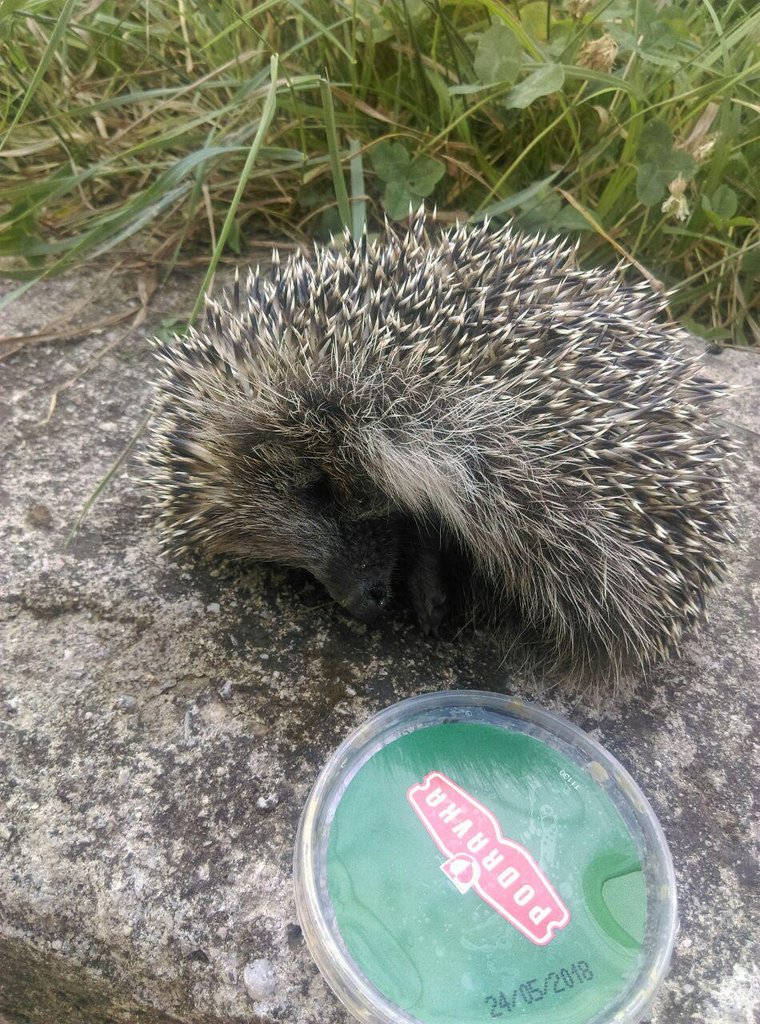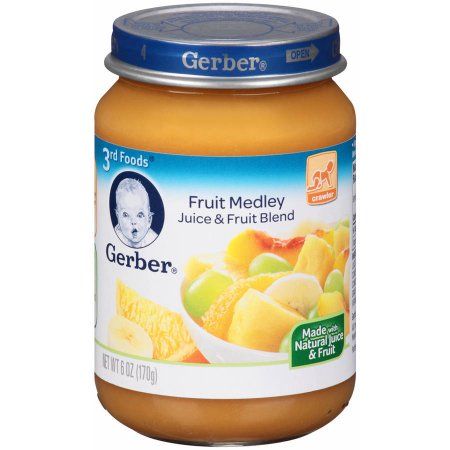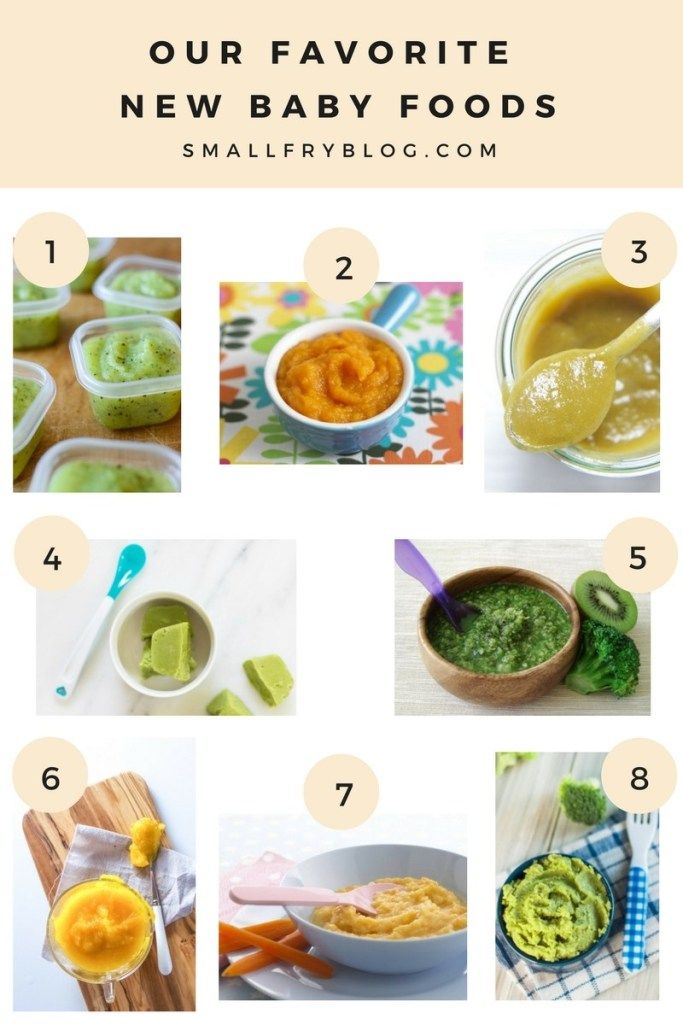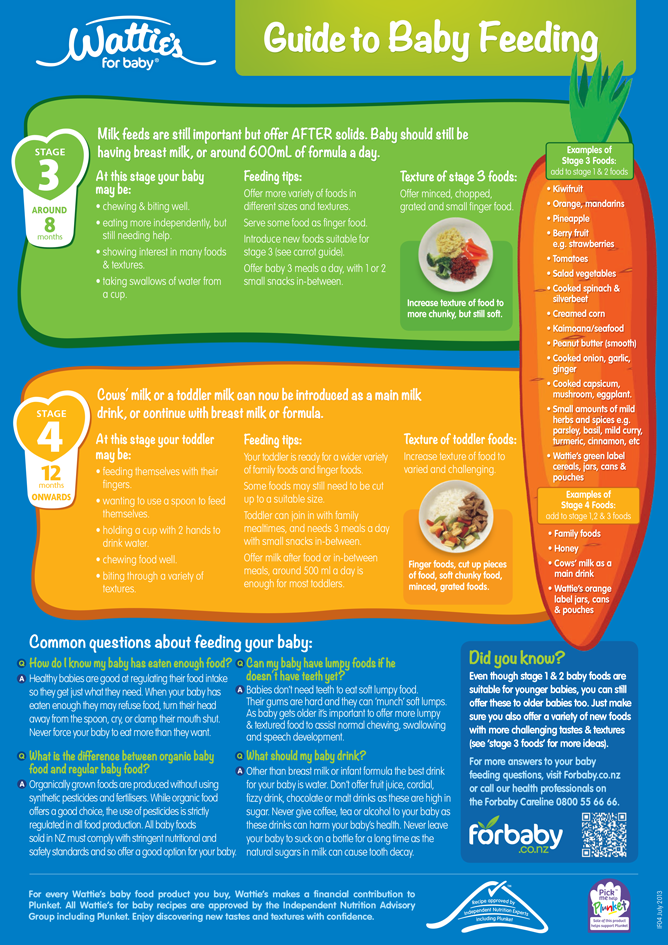New feeding method for babies
Baby-Led Weaning is a New Way of Feeding Your Baby - Learn More About it
Every parent remembers when they first introduced their baby to solid foods. This momentous occasion of spoon-feeding them pureed food is considered a major milestone for babies and their parents.
Today however, more and more parents are opting to skip the applesauce and mashed sweet potatoes and instead are adopting a new feeding technique called “baby-led weaning” ( or BLW) for their babies. This alternative approach to feeding, first introduced in the UK a decade ago, involves introducing solid chunks of foods much earlier on by placing them on the baby’s high chair and letting them grasp the food and feed themselves directly. As the name implies, feeding time is led by the baby as they determine the pace and the amount of food they consume; basically, baby-led weaning puts the baby in charge.
While children all develop at different paces, advocates of baby-led weaning agree that this method of eating shouldn’t be introduced until the baby is ready. Cues to begin BLW include making sure that your baby can sit up straight unassisted, have good neck strength and be able move food to the back of their mouth with up and down jaw movements. Most babies develop these skills by the sixth month, but some babies may not fully develop them until they are nine months old.
Proponents of BLW believe that it holds many benefits, including enhancing baby’s hand-eye coordination and other fine motor skills, including using their thumb and index finger to grasp their food. They also feel that it will produce healthier eaters than spoon-fed babies because BLW eaters get to choose how much they eat as opposed to traditional feeding methods, which sometimes results in force feeding. Other advantages that BLW supporters claim to be true is that it creates a more enjoyable feeding experience for babies and less stress on their parents.
Detractors of baby-led weaning feeders point out that these babies are generally underweight as compared to spoon-fed babies because they simply do not ingest that much when they are first introduced to this way of eating due to difficulties grabbing food. BLW babies also tend to be iron-deficient because they aren’t consuming the iron-fortified cereals that spoon–fed babies typically eat. Lastly, a big concern for many parents is the increased choking hazards associated with BLW, and while the American Academy of Pediatrics doesn’t have opinion of BLW, they do state that babies are ready for solid food once they are ready to sit up on their own and bring their hand to their mouth.
BLW babies also tend to be iron-deficient because they aren’t consuming the iron-fortified cereals that spoon–fed babies typically eat. Lastly, a big concern for many parents is the increased choking hazards associated with BLW, and while the American Academy of Pediatrics doesn’t have opinion of BLW, they do state that babies are ready for solid food once they are ready to sit up on their own and bring their hand to their mouth.
If you are considering baby led weaning for your child, here are a few tips:
- Continue breast feeding and / or formula feeding as this will continue to be your baby’s biggest source of nutrition until they are 12 months old.
- Begin BLW feedings with softer foods, such as ripe fruits, cooked egg yolks, and shredded meats, poultry and fish.
- Avoid foods that can pose as choking hazards, such as nuts, grapes, popcorn, or foods cut into coin shapes, like hot dogs.
- Do not leave your child unattended during BLW feeding times.
 Continue to supervise and socialize with them while they eat and to have them eat when the rest of the family does.
Continue to supervise and socialize with them while they eat and to have them eat when the rest of the family does. - Don’t panic if your baby gags as it is a safe a natural reflex. Instead of overreacting, prepare for a choking event by familiarizing yourself with the infant-specific Heimlich maneuver.
- Introduce new foods one at a time to pinpoint potential food allergies. A recommended length of time is three to four days between foods.
- The goal of BLW is to let your baby explore eating at their own pace. This may include the smashing, smearing, or dropping of food, so prepare for a mess.
Before you decide to adopt BLW to your child, it is a good idea to discuss with your child’s pediatrician as it may not be a good idea for all babies, especially those babies with known developmental delays or neurological issues.
To make an appointment with a pediatrician at Flushing Hospital’s Ambulatory Care Center, please call 718-670-5486.
All content of this newsletter is intended for general information purposes only and is not intended or implied to be a substitute for professional medical advice, diagnosis or treatment. Please consult a medical professional before adopting any of the suggestions on this page. You must never disregard professional medical advice or delay seeking medical treatment based upon any content of this newsletter. PROMPTLY CONSULT YOUR PHYSICIAN OR CALL 911 IF YOU BELIEVE YOU HAVE A MEDICAL EMERGENCY.
Please consult a medical professional before adopting any of the suggestions on this page. You must never disregard professional medical advice or delay seeking medical treatment based upon any content of this newsletter. PROMPTLY CONSULT YOUR PHYSICIAN OR CALL 911 IF YOU BELIEVE YOU HAVE A MEDICAL EMERGENCY.
What is baby-led weaning and what foods are best for it?
Baby-led weaning is a way to introduce solid foods to babies. Instead of spoon-feeding baby cereal and purees, parents skip straight to finger foods and let their baby feed themself. The best foods for baby-led weaning are large pieces of soft foods that are easy to grab and chew, like banana spears, baked apple slices, thin slices of toast, and soft-cooked meat. There isn't much research on the benefits and drawbacks of baby-led weaning, so talk to your pediatrician to see if it's a good fit for your baby.
Baby-led weaning (BLW) is a method for starting your baby on solids. Instead of spoon-feeding them mushy cereals and purees, you put large chunks of soft food directly on the highchair tray or table, and let your baby grab the food and feed themself.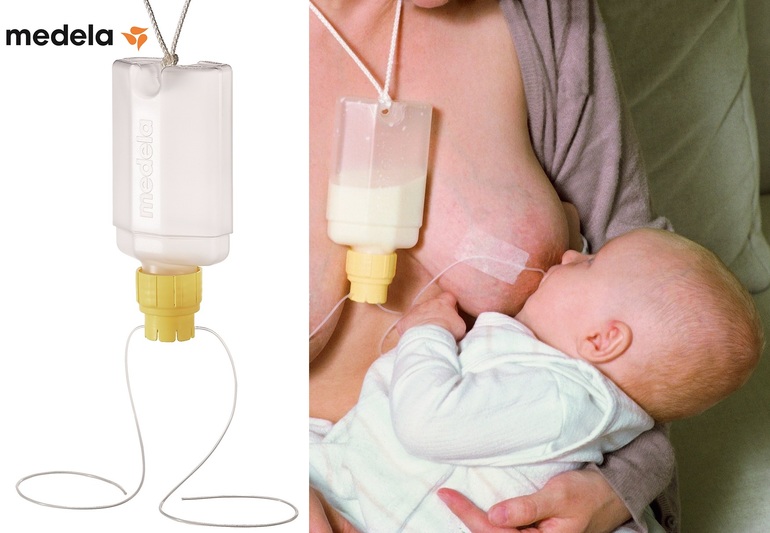 It's called "baby-led" because you let your baby pick up the food and eat at their own pace, instead of controlling how much and how quickly they eat.
It's called "baby-led" because you let your baby pick up the food and eat at their own pace, instead of controlling how much and how quickly they eat.
Just as with traditional spoon-feeding, your baby will continue to get most of their nutrition from breast milk or formula until they get used to eating solid food (usually around their first birthday).
Check out our videos to see how it's done:
- Baby-led weaning: Signs your baby is ready
- Baby-led weaning: Getting started
- Baby-led weaning: 9 great finger foods
- Baby-led weaning: Is gagging normal?
When to start baby-led weaning
Most babies are ready to start BLW when they're about 6 months old, though some may need more time. Your baby will give you a few signs they're ready for solid foods: If they can sit up without support, can grab and put objects in their mouth, and open their mouth when food is offered, they're probably ready to begin exploring table foods.
Keep in mind that BLW may not be right for babies with special needs or babies who are unable to pick up and chew food on their own. Talk with your baby's doctor before trying BLW, especially if:
- Your baby has special needs and can't chew very well.
- Your baby has difficulty picking up food and moving it to their mouth.
- Your baby was born prematurely. Premature babies have an adjusted developmental milestone schedule, so they may not be ready for solid food at 6 months – and they have different caloric needs in their first year.
How to start baby-led weaning
If your baby shows signs of readiness and their doctor says it's okay to try BLW, here are some tips for getting started:
- It will take your baby time to learn to eat solids, and in the meantime, they'll still be getting their nutrition primarily from breast milk or formula. BLW sessions can focus on fun and exploration. If your baby's hungry, it might be best to give them a bottle or nurse them before offering solid food, so they don't get frustrated.

- BLW can be messy! Manage the mess with a large bib or smock. Placing a mat under your baby's highchair can make for easier cleanup, too.
- Make sure you or another adult is always watching carefully during meals and knows what to do if your baby starts choking. As long as you're watching them, BLW doesn't create a higher risk of choking.
- When it's time to feed your baby, sitting upright in a highchair, not leaning back, is the safest choice.
- Offer your baby soft or well-cooked food cut into sticks or strips that are at least as long as their fist, not bite-size pieces. They'll likely try to hold the food in their fists and smash it into their mouth at first. Over time, they'll learn to grip the food between their thumb and forefinger.
- Don't offer your baby foods that can be choking hazards, like nuts, grapes, popcorn, and foods cut into coins, including sausages and hot dogs.
- Make sure your baby's food passes the "squish test" by checking whether you can squish it on the roof of your mouth with your tongue.
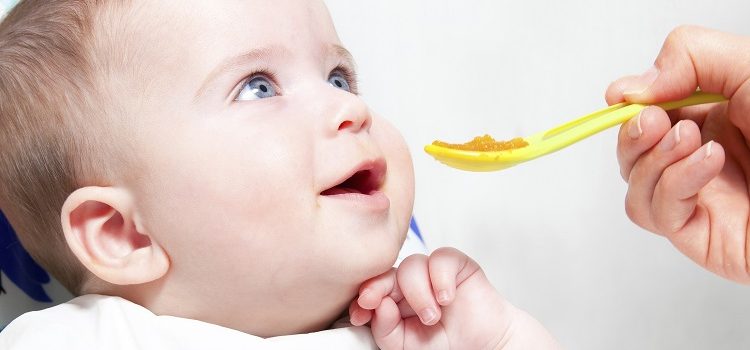 That means no raw vegetables and no hard, raw fruit (such as apples) or citrus fruit (unless each segment is peeled). The exception is pieces of food that are large and fibrous enough that small pieces don't break off when sucked or chewed. For example, soft-cooked meat is okay, but cheese sticks are not.
That means no raw vegetables and no hard, raw fruit (such as apples) or citrus fruit (unless each segment is peeled). The exception is pieces of food that are large and fibrous enough that small pieces don't break off when sucked or chewed. For example, soft-cooked meat is okay, but cheese sticks are not. - Put food directly on the highchair tray or table in front of your baby. (Bowls and plates will just end up on the floor.)
- Introduce new foods one at a time. Just as with spoon-feeding, wait three to five days after introducing a new food before trying the next one. That way, if your baby has an allergic reaction, you'll know which food probably caused it.
- Eat as a family whenever possible. Babies learn to eat by observing and imitating other family members. Family mealtimes can also help your baby feel like part of the group.
Advertisement | page continues below
As with many other parenting approaches, what works for some families won't necessarily work for yours. Some families strictly follow the BLW approach, while others do a combination of BLW and spoon-feeding. For example, you could spoon-feed your baby purees and mashed food sometimes, but allow them to feed themself finger foods (like the ones listed below) at other times.
Some families strictly follow the BLW approach, while others do a combination of BLW and spoon-feeding. For example, you could spoon-feed your baby purees and mashed food sometimes, but allow them to feed themself finger foods (like the ones listed below) at other times.
Good baby-led weaning foods
Some foods that are good to use with BLW include:
- Well-cooked vegetable sticks, including steamed carrots, zucchini, sweet potatoes, and beets
- Food with interesting shapes and textures, such as steamed broccoli and cauliflower florets, and slices of ripe avocado
- Soft, ripe fruits, including banana, papaya, pear, kiwi, melon, and soft-cooked apple
- Large strips of poached chicken or fully cooked steak. Babies won't be able to chew and swallow meat like steak, but they can gnaw and suck on it to get the flavor.
- Whole-grain or vegetable pasta in a shape that's easy to grab, like fusilli or penne
- Rice rolled into balls
- Lentil patties
- Salt-free rice cakes
- Pieces of tofu
As your baby progresses, they can start learning to dip their food chunks into hummus, unsweetened yogurt, and guacamole.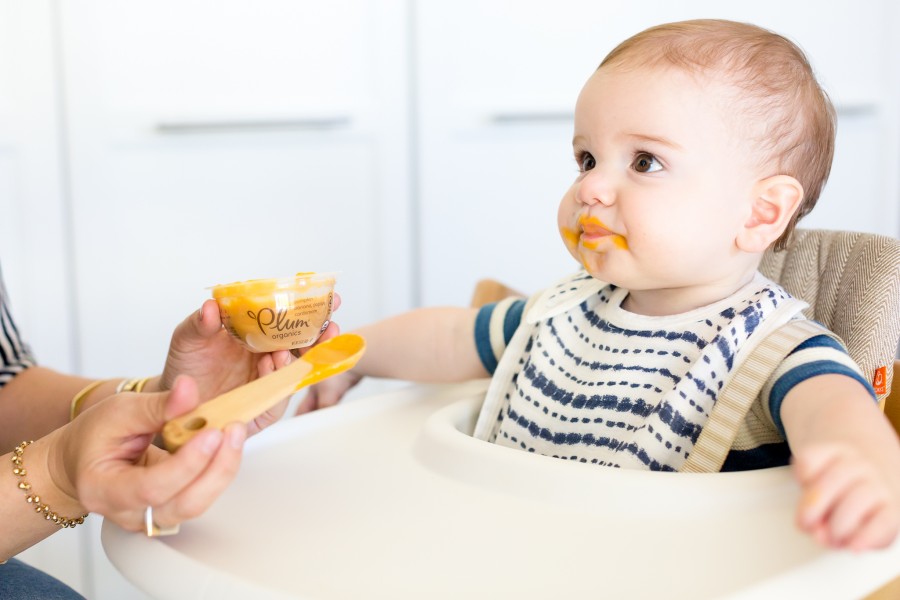
Gagging and choking in baby-led weaning
One concern about giving babies whole food to eat is whether 6-month-old babies are developmentally ready to chew and swallow chunks of food and whether these chunks – even when they're soft – are choking hazards.
Research suggests that baby-led weaning isn't associated with a greater risk of choking. As long as you're watching your baby while they eat and giving them easy-to-eat foods, baby-led weaning is safe.
Whether they're being spoon-fed or feeding themselves, many babies gag when they first start solids, and this can be disconcerting or even frightening.
Gagging is a normal reflex babies have as they learn to eat solids. Gagging brings food forward inside your baby's mouth so they can chew it more or try to swallow a smaller amount. As they get more experience with solid food, your baby will gag less often.
It's also normal for babies to gag as they get used to new flavors and textures. If your baby gags a lot, remember it's a temporary stage that your baby will get through. (If your baby's gagging doesn't improve on its own, talk with their doctor. There are some babies who need feeding therapy, usually with a speech therapist or occupational therapist.)
(If your baby's gagging doesn't improve on its own, talk with their doctor. There are some babies who need feeding therapy, usually with a speech therapist or occupational therapist.)
Here's how to recognize the difference between gagging and choking:
- A child who is gagging may push their tongue forward or out of their mouth and do a retching movement to try to bring food forward. Their eyes may water. They may cough or even vomit. Let your child continue to cough because that's the most effective way to resolve the problem.
- A child who is choking is unable to cry, cough, or gasp. They may make odd noises or no sound at all while opening their mouth. You may need to do back blows or chest thrusts to dislodge the blockage. It's a good idea to take an infant first aid class so you know what to do if your baby chokes.
The pros and cons of baby-led weaning
Many experts say more research is needed on baby-led weaning, but some studies have found it may have the following benefits:
- Healthy eating: Since babies feed themselves, BLW allows them to learn how to listen to their hunger cues and stop eating when they aren't hungry anymore, rather than relying on their parents to tell them when to stop eating.
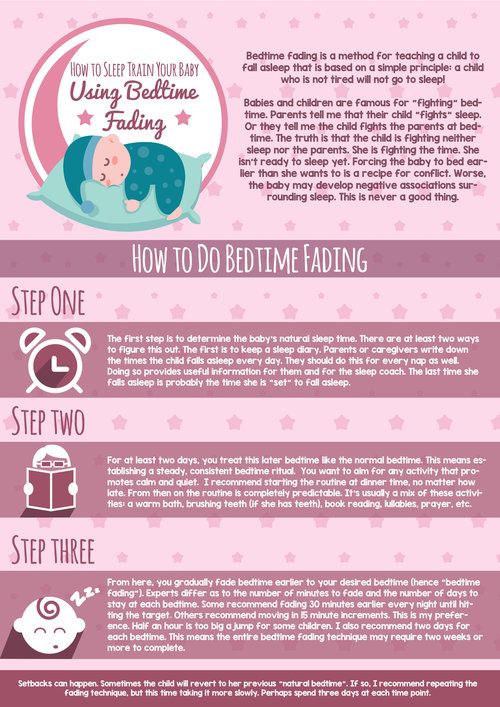 This may produce healthier eaters. Allowing babies to explore different food flavors and textures may make them more adventurous eaters who are more likely to eat a broad range of foods as they grow up.
This may produce healthier eaters. Allowing babies to explore different food flavors and textures may make them more adventurous eaters who are more likely to eat a broad range of foods as they grow up. - Skill development: By trying to grasp and eat chunks of food, infants practice fine motor skills. BLW allows babies to practice eye-hand coordination and picking up pieces of food using the pincer grasp.
- Can be easier for parents: Though you still need to supervise your baby closely, you won't need to spoon-feed your baby with BLW. Your baby can be part of your family's regular dinnertime flow.
There are also potential downsides to baby-led weaning. Some researchers are concerned about:
- Low calorie intake: Because babies are responsible for moderating their own eating, and because young babies aren't very experienced at feeding themselves, they may not eat as much food in their early months of BLW compared to spoon-feeding.
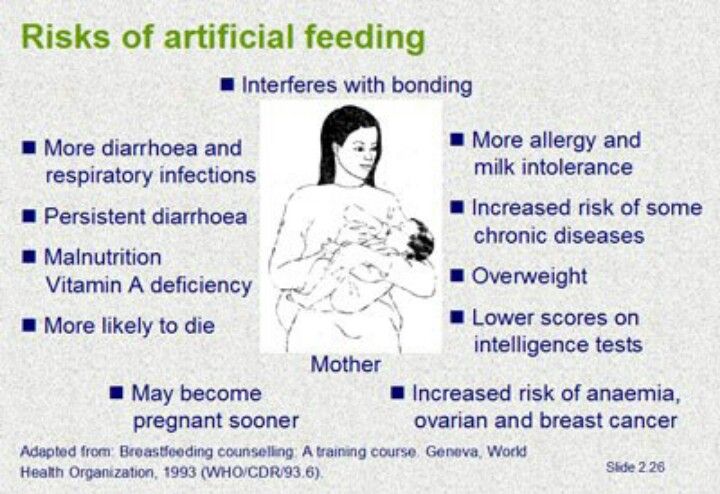
- Nutritional deficiencies: BLW babies may end up deficient in iron, especially if they don't drink formula, because they don't get the iron-fortified cereal that spoon-fed babies are often given.
It takes babies a while to get used to solid food. To ensure adequate nutrition, continue breastfeeding or bottle-feeding your baby during their first year, even after they start eating solid food. (Your baby's main source of nutrients will be breast milk or formula until they're about a year old.) As they learn to eat solid food, they'll need less breast milk or formula.
If you're not sure how much your baby needs to eat and when, check out our age-by-age guide to feeding.
Your baby's doctor will keep track of your baby's growth at well-child visits, so talk with them if you're concerned about how much your baby eats or weighs.
What is baby-led feeding?
Baby-led feeding is often just another name for baby-led weaning. "Weaning" has different meanings in different places – in the United Kingdom, where baby-led weaning started, it refers to the process of introducing solid foods to your baby. But in the United States, it most often refers to ending breast- or bottle-feeding.
But in the United States, it most often refers to ending breast- or bottle-feeding.
Because of that, baby-led weaning is sometimes referred to as "baby-led feeding" in the U.S.
For some, the terms are synonymous. For others, though, baby-led feeding is the unofficial name of a slightly different approach that blends traditional spoon-feeding and baby-led weaning techniques. That might mean offering purees when it's easier and faster, like at daycare or when your family is on the go, and then allowing your baby to eat soft table foods and finger foods at home. This method is also sometimes called modified baby-led weaning.
Baby-led weaning tips
There's no official guidance from the American Academy of Pediatrics (AAP) on baby-led weaning, but many experts say it's safe as long as your baby is developmentally ready to start eating solids. Here are some tips from experts on using BLW:
- Be flexible and be willing to use whatever method works best for your child.

- Make sure the food is developmentally appropriate for your child.
- Food for 6-month-olds doesn't need to be pureed, but it should be the texture, consistency, and size that the child can handle.
- Stay nearby and watch your child eat.
- Be mindful of choking hazards – don't give your baby big globs of sticky foods like peanut butter or hard foods like raw carrots and apples.
- Offer a food several times before deciding your baby doesn't like it. Sometimes, it just takes a little while for your baby to get used to a new flavor or texture.
And here are some comments on BLW from parents who used the method and liked it:
"[Baby-led weaning was] one of the best decisions we made with our daughter. She's a fantastic eater and eats a great variety of food. I also believe it made her a great restaurant eater. We always got compliments on how well-behaved she was, and people were always shocked to see a 7-month-old feeding herself in a restaurant. "
"
— Michele
"BLW worked great for us. I have never felt that because of BLW my son wasn't eating healthy foods. In fact, I thought the opposite because he wasn't getting anything processed."
— Heather
"We started baby-led weaning my little guy when he was 6 months old, and we've never looked back. We were really nervous at first about him choking, but in the four months we've been doing this, he hasn't choked once! I'm a huge advocate for BLW. My son will eat anything that I put in front of him and is so excited to try new foods."
— Mandy
"I love baby-led weaning, but it's probably not a magic bullet. I like it because it has freed up a lot of time for me. (I don't have to sit and spoon-feed at every meal.) And it allowed my son to be independent in choosing and eating food. It worked for us because my son was developmentally normal, at a normal weight, and had good manual dexterity."
— Laura
Check out our Community group on baby-led weaning to see what other questions and experiences parents have had with this technique.
Feeding children in their first year of life
January 29, 2019
Breastfeeding
Natural feeding is a type of feeding when a child receives women's milk for the first 4-4.5 months in full daily volume or its share is at least 80%. Rational nutrition plays a paramount role in ensuring the harmonious growth and development of the child's body, maintaining the health of the child, resistance to infections and other adverse external factors. Breast milk is fresh, natural, available at any time of the day, sterile and at the right temperature food for the baby. It has an optimal and balanced composition, high digestibility, a wide range of biologically active substances, which even the most perfect milk mixtures do not have.
In addition, psycho-emotional contact between mother and child during feeding has a beneficial effect on the formation of behavioral reactions in the child in the future and affects his intellectual development. In this regard, women's milk can be considered as the "gold standard", the only indispensable product created by nature itself for feeding children in the first year of life.
In this regard, women's milk can be considered as the "gold standard", the only indispensable product created by nature itself for feeding children in the first year of life.
Several methods are used to calculate food volume:
Breast milk is the most optimal for feeding children in the first 4-5 months of life, but it cannot provide the growing body with the necessary vitamins and minerals. Therefore, as the child grows older, it is necessary to correct nutrition by introducing juices, vegetable and fruit purees into the child's diet. This is the basis for its proper development, prevention of rickets, iron deficiency conditions, dysfunction of the digestive tract. With natural feeding, juices should be introduced from 3.5-4 months. Earlier introduction of juices from 1.5-2 months is not advisable, as it can lead to disruption of digestion processes, allergization of the body. Juices are prescribed between feedings, starting with 2-5 drops, gradually increasing the daily dose. Juices are not included in the total amount of food and are not taken into account. 2 weeks after the introduction of juices into the diet of a child at the age of 4-4.5 months, puree from apples, apricots and other fruits is introduced. Over time, breast milk ceases to satisfy the needs of a growing body and, in addition, training of the developing digestive system, chewing apparatus and stimulation of intestinal motor activity is necessary. For this purpose, complementary foods are introduced at the age of 4-5 months. Complementary foods are dishes that gradually replace women's milk, accustom the child to adult food. It is introduced with a spoon, starting with small volumes (1/2 teaspoon), supplementing the missing volume of breast milk. Gradually, over several days, bring the volume to full feeding.
Juices are not included in the total amount of food and are not taken into account. 2 weeks after the introduction of juices into the diet of a child at the age of 4-4.5 months, puree from apples, apricots and other fruits is introduced. Over time, breast milk ceases to satisfy the needs of a growing body and, in addition, training of the developing digestive system, chewing apparatus and stimulation of intestinal motor activity is necessary. For this purpose, complementary foods are introduced at the age of 4-5 months. Complementary foods are dishes that gradually replace women's milk, accustom the child to adult food. It is introduced with a spoon, starting with small volumes (1/2 teaspoon), supplementing the missing volume of breast milk. Gradually, over several days, bring the volume to full feeding.
First food - vegetable puree. The introduction of vegetable complementary foods should begin with one type of vegetable (potatoes soaked for 10-12 hours, cabbage, zucchini, etc. ). This will allow, in the event of a food allergy, to identify the allergen as soon as possible and eliminate it from the diet. At least 2 weeks are allotted for each new taste. Gradually, the assortment of vegetables increases, it is possible to prepare vegetable mixtures containing various types of vegetables. Tomatoes, green peas, pumpkin are introduced later.
). This will allow, in the event of a food allergy, to identify the allergen as soon as possible and eliminate it from the diet. At least 2 weeks are allotted for each new taste. Gradually, the assortment of vegetables increases, it is possible to prepare vegetable mixtures containing various types of vegetables. Tomatoes, green peas, pumpkin are introduced later.
The second food is introduced only after replacing one meal with vegetable food. Gluten-free cereals (rice, buckwheat, corn flour) are used as the 2nd complementary food. The first 1-2 weeks complementary foods are introduced in the form of 5% porridge, after 1-2 weeks - 10% porridge. If the child is not gaining weight well or there is a tendency to unstable stools, it is advisable to introduce porridge into the diet first, and then vegetable puree. From 6-7 months, you can enter into the diet the yolk of a hard-boiled egg, with ¼ part and mashed with breast milk, 2-3 times a week. From 7-8 months it is recommended to introduce cottage cheese from a dose of 5-10 g before the main feeding.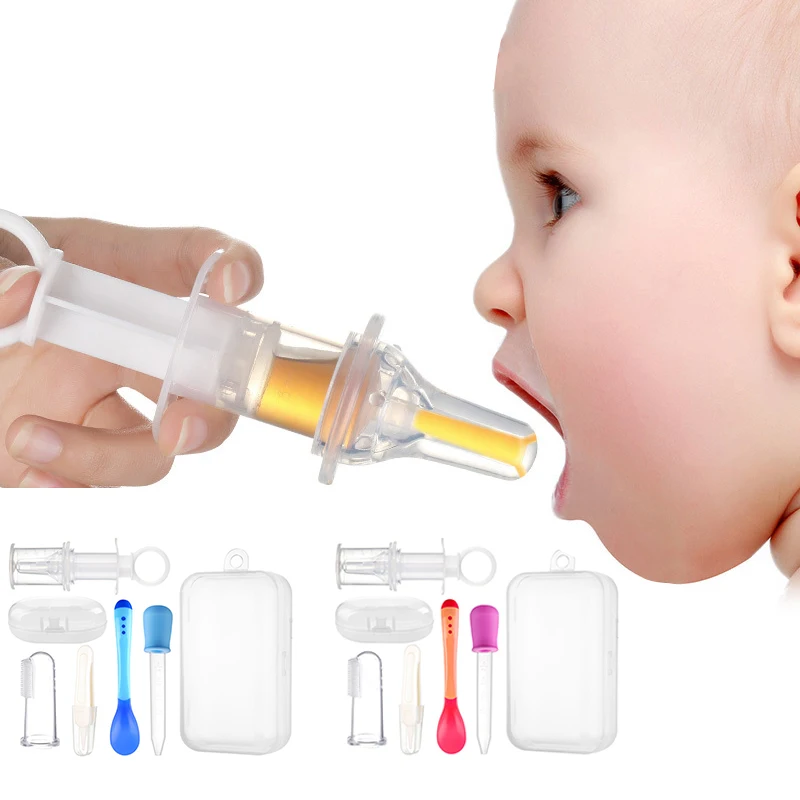 By the year, the dose of cottage cheese is 50 g. Meat in the form of meat puree is introduced from 7 months. In the future, it is replaced by meatballs (8-9months) and steam cutlets (10-12 months).
By the year, the dose of cottage cheese is 50 g. Meat in the form of meat puree is introduced from 7 months. In the future, it is replaced by meatballs (8-9months) and steam cutlets (10-12 months).
From 7.5-8 months, the third complementary food begins to be introduced in the form of fermented milk products. Dairy products based on cow's milk with a low protein content and an optimal set of fatty acids, minerals and vitamins can also be prescribed. From 8-9 months, instead of a meat dish, fish is given 1-2 times a week. You can give bread, white crackers, cookies, they are pre-soaked in one of the types of complementary foods. From 10-12 months, grated cheese is introduced. Vegetable oil is introduced already in the first feeding, starting from 1/2-1/3 teaspoon to 1 teaspoon by 12 months. Butter is introduced only from 6 months.
At about one year old, the baby begins to wean. If, upon reaching the age of a child, a woman continues to lactate and there is a mutual desire to continue breastfeeding, provided that it is combined with complementary foods adequate for age, then this should not be resisted. In this case, the child himself will refuse the breast. However, breastfeeding for more than 3 years cannot be considered justified, as it interferes with the normal development of the child's personality.
In this case, the child himself will refuse the breast. However, breastfeeding for more than 3 years cannot be considered justified, as it interferes with the normal development of the child's personality.
Harmonious development of the child, good emotional state, timely teething, timely formation of physical activity, good immunity, correct formation of the skeleton are signs indicating adequate age and good nutrition.
Information prepared by dietary nurse E.A. Lapteva
Share on social networks:
Current news
Good or evil?
15.11.22
Read more
Another joy!
09.11.22
Read more
One world for all!
04.11.22
Read more
On the way to happiness
03.11.22
Read more
Project "Transfiguration"
28.10.22
Read more
Teen and law 9000
.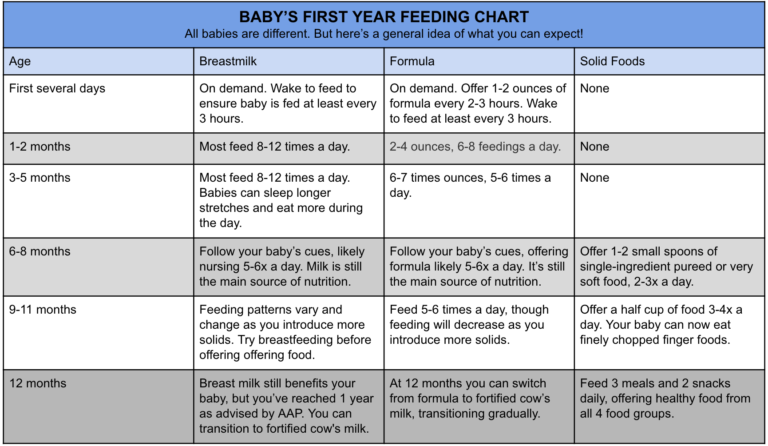 10.22 9005 Previous Track.
10.22 9005 Previous Track.
Complementary foods - what is it and how is it eaten?
home
Articles
Food
Loginevskaya Yana Vladimirovna Pediatrician
24.04.2019
What is weaning and when should we start it? These and many other issues related to child nutrition torment young parents. In the era of the Internet and easy access to information, this information can sometimes become too much.
Let's understand what is complementary foods
Complementary foods is the introduction into the diet of a healthy child at a certain age of any foodstuffs, homemade or industrially prepared, that supplement breast milk or food that imitates it, and contribute to the gradual transfer of the child to the general table. As a rule, complementary foods are thicker in consistency than the child's previous food. If the child has any health problems, the introduction of complementary foods may have its own characteristics.
If the child has any health problems, the introduction of complementary foods may have its own characteristics.
The purpose of complementary foods in the first year of life is to introduce the baby to foods other than breast milk/or formula. Timely teach to swallow and chew solid food. And also to avoid deficiency of energy and micronutrients, and vitamins.
In the literature and other sources, you can find such names as "pediatric" and "pedagogical" complementary foods?
Pediatric Complementary Food , as its name implies, is a classic complementary feeding regimen recommended by the pediatrician at the appointment. Schemes in which there is a gradual replacement of breast milk / formula feeding with cereals, fruit / vegetable purees and other types of products.
Pedagogical complementary foods - "Pedagogical" means that first of all the child is taught - they are taught to eat, the correct behavior at the table, they teach that food is joy and pleasure, they show new tastes. The essence of pedagogical complementary foods is that the child’s nutrition begins with “microdoses” (grains of food) that the child receives from his mother’s plate, nothing is puréed or blended, or even warmed up. Nutrition of the child - together with the family, how much he will eat, he will eat so much. Nothing is specially prepared, the family is invited to switch to a healthy diet. The disadvantage of this type of complementary foods is that the child, starting with “micro doses”, does not adequately increase the volume of complementary foods, which can lead to malnutrition of the child at an older age.
The essence of pedagogical complementary foods is that the child’s nutrition begins with “microdoses” (grains of food) that the child receives from his mother’s plate, nothing is puréed or blended, or even warmed up. Nutrition of the child - together with the family, how much he will eat, he will eat so much. Nothing is specially prepared, the family is invited to switch to a healthy diet. The disadvantage of this type of complementary foods is that the child, starting with “micro doses”, does not adequately increase the volume of complementary foods, which can lead to malnutrition of the child at an older age.
In my article, I will rely on modern research and recommendations primarily from the WHO (World Health Organization) and the National Program for Optimizing Feeding in Children in the First Year of Life in the Russian Federation.
What requirements must be met in relation to complementary foods:
- Complementary foods must be timely, introduced at the moment when the child's energy and nutrient requirements exceed what can be provided through breastfeeding (or formula).
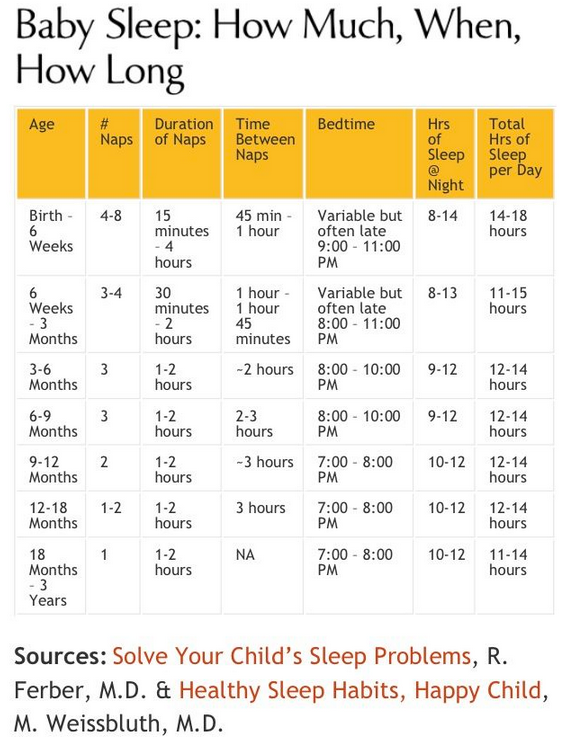
- Complementary foods should be adequate, that is, with enough energy, protein and micronutrients to meet the nutritional needs of a growing child.
- Safe - Store or prepare hygienically and feed with clean hands using clean utensils - spoons, plates, not bottles and nipples.
- Properly Administered - The child is fed appropriately for hunger cues, and feeding frequency and feeding methods should be appropriate for the child's age.
When do we introduce complementary foods
The optimal age for the introduction of complementary foods is 6 months.
If the child is premature, then the timing of the introduction of complementary foods is delayed by as much as this child was born earlier (that is, if the child was born not at 40 weeks, but, for example, at 36, we have the right to postpone the introduction of complementary foods for 4 weeks, but if we see that at 6 months the child is already quite ready for the introduction of complementary foods, then you can start as early as 6 months). It is advisable to postpone the introduction of complementary foods for no more than 2 months. Try to start the introduction of complementary foods no later than 8 months of the child.
It is advisable to postpone the introduction of complementary foods for no more than 2 months. Try to start the introduction of complementary foods no later than 8 months of the child.
Up to 6 months, breastfeeding fully covers the energy needs of the child. Around 6 months of age, a baby's energy requirements increase dramatically, so it is necessary to add something to his diet in addition to liquid food. Breast milk in terms of its energy value contains 67-68 kcal / 100g, the mixture has approximately the same figures. Breast milk remains a valuable energy product for children not only in the first year of life, but also after a year. At the same time, it should be taken into account that the volume of the child's stomach by 6 months is about 200 ml, so the food introduced to the child must be thicker than formula or breast milk, otherwise we will still not be able to meet the energy needs of the body. The optimal calorie content of complementary foods should be at least 100 kcal / 100 g.
Liquid food and liquid quickly fill the stomach. To fill the energy deficit, it is necessary to introduce foods with a higher energy value than breast milk or formula.
WHO ways to increase calories:
-
cook with less liquid
-
Replace part of the water for cooking with breast milk or a mixture (it must be borne in mind that breast milk contains enzymes (lipase) - which begin the digestion and breakdown of food even before it enters the child's body, so instant cereals, when breast milk is added, immediately become liquid, but their energy value is not lost.
What do we focus on when introducing complementary foods:
The main criterion is the readiness of the child to introduce complementary foods - the child shows interest in food, the so-called food interest - he is interested in what his mother eats, actively reaches for food from his parents' plate, wants to taste it.
Indirect criteria
- Child's age about 6 months
- Decreased ejection reflex for solid food (active interest in food is never shown until ejection reflex fades)
- Doubling birth weight (optional item, some babies double their weight before 6 months of age)
- Child can sit with support
- The first teeth appear in a child (again, not always)
Principles of maintaining interest in food
- Parents should remember that in order to form the main criterion for readiness for complementary foods, the child must see how his family eats.
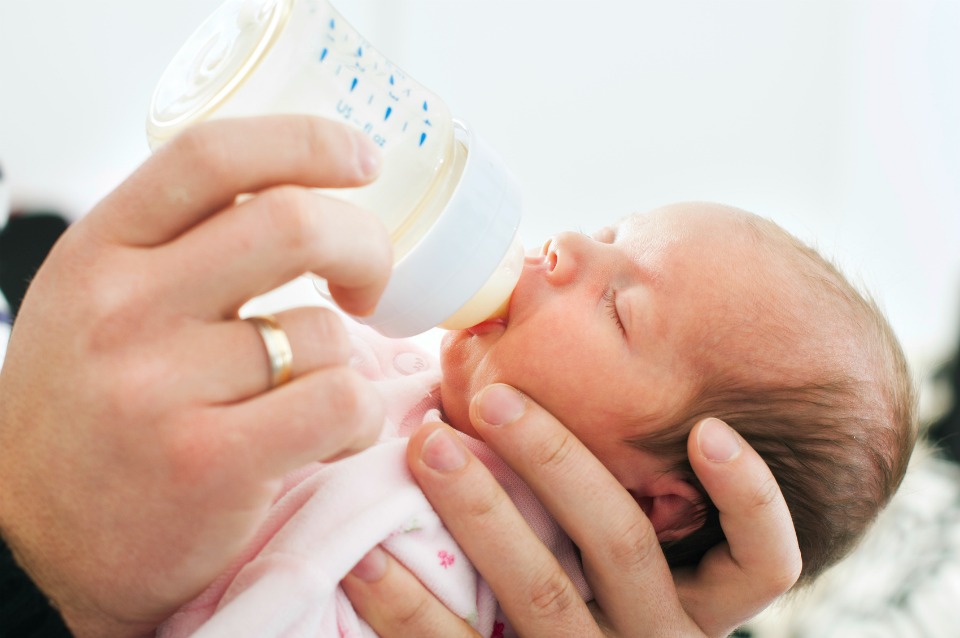 The formation of eating habits comes from the family and the immediate environment of the child. If, before 6 months, the child has never seen how mom or dad eats, how they eat at the table and what they eat, he may not have a food interest by 6 months. Food interest begins to gradually form as a skill of tracking the actions of an adult from 3 months of age. That is, somewhere from the age of 3 months the child, if you take him with you to the kitchen (dining room), the child begins to observe the process of eating, and gradually this interest - from the interest of "observation" goes to the "desire" to try just like mom or dad.
The formation of eating habits comes from the family and the immediate environment of the child. If, before 6 months, the child has never seen how mom or dad eats, how they eat at the table and what they eat, he may not have a food interest by 6 months. Food interest begins to gradually form as a skill of tracking the actions of an adult from 3 months of age. That is, somewhere from the age of 3 months the child, if you take him with you to the kitchen (dining room), the child begins to observe the process of eating, and gradually this interest - from the interest of "observation" goes to the "desire" to try just like mom or dad. - It is advisable not to feed the baby separately and try to eat with the baby what the baby eats. If you are feeding your child with industrial food (ready-made mashed potatoes in a jar), then try this food with your child. Try to bring the canned food as close as possible to the general view on the table - transfer the puree from the can to a plate, give a spoon.
 At the age of 8-10 months, the child learns to eat with his hands, so at this age it is advisable that the child has small pieces of food on the plate that he already eats - these can be pieces of boiled potatoes, broccoli, cauliflower, pieces of apple, banana. The pieces should be small, 1 x 1 cm, so that the child can grab them with his fingers. In parallel, the mother can supplement the child from the plate with the main food. The child learns to cope with more solid food, learns to chew, swallow. The sooner the skill of swallowing more solid food is worked out, the easier it is for parents in the future. At the age of 10-12 months, the child's fine motor skills are already improving, he is learning to eat with a spoon (be patient, different children do it in different ways and at different speeds)
At the age of 8-10 months, the child learns to eat with his hands, so at this age it is advisable that the child has small pieces of food on the plate that he already eats - these can be pieces of boiled potatoes, broccoli, cauliflower, pieces of apple, banana. The pieces should be small, 1 x 1 cm, so that the child can grab them with his fingers. In parallel, the mother can supplement the child from the plate with the main food. The child learns to cope with more solid food, learns to chew, swallow. The sooner the skill of swallowing more solid food is worked out, the easier it is for parents in the future. At the age of 10-12 months, the child's fine motor skills are already improving, he is learning to eat with a spoon (be patient, different children do it in different ways and at different speeds) - Be mindful of the child's physical condition - do not introduce new foods when the child is unwell or tired or teething or has undergone some medical procedure such as a vaccination
- Offer small portions.
 Some children undereat food because they are initially intimidated by the portion size. Do not insist that the child finishes the portion. Let him ask for another after some time
Some children undereat food because they are initially intimidated by the portion size. Do not insist that the child finishes the portion. Let him ask for another after some time - Try to keep the area around the child clean! This initially teaches the child to cleanliness at the table and to a neat diet. Some children are very sensitive to external stimuli - dirty hands, face, clothes can cause them severe discomfort
- Help the child if you see that the child is "interested" in food, but tired of fighting with it.
- No games, entertainment or persuasion while eating - in this way you replace food interest with interest in the game. The child will not be able to learn to adequately assess their desires in food. Don't turn food into a show.
Complementary feeding rules:
-
any new product is introduced only to a healthy child. A breastfed baby is given complementary foods up to the breast.
-
the introduction of new foods should not coincide with vaccinations, teething, vacations, or other stress for the child (when stressed, the child may refuse the proposed new product).

-
any new product is introduced in the morning (so parents have time to observe the child, look at his reaction, notice allergic manifestations) If the child has a reaction to a new product, then it is better to write it down, and try to introduce the product again after 5- 10 days. Because this reaction may not be related to the product, but caused by other factors. If the negative reaction is repeated, then the introduction of this product is postponed for 3 months.
-
it is advisable to introduce no more than one new product per day.
-
to get acquainted with the product, the child sometimes needs 10-15 sentences in order for him to start eating it. The reaction of the child in the form of wrinkling, pushing food, curvature of the face does not indicate that the child did not like the food, but only that the new taste is very bright for him and causes a large number of emotions. For children, even neutral tastes can seem very rich, due to the higher sensitivity of the receptors.
 Therefore, when introductory feeding, it is not recommended to use spices and salt in the preparation of food for the child.
Therefore, when introductory feeding, it is not recommended to use spices and salt in the preparation of food for the child.
Basic complementary foods
For the first feeding, there are three main types of products: cereals, vegetables and meat.
-
Cereals - Dairy-free cereals are used to start complementary foods. Rice, corn, buckwheat are the first to be introduced - these can be special “instant” baby cereals (we carefully study the composition, make sure that there are no additives, sweeteners, flavor enhancers, vitamins), instant cereals are well suited to start complementary foods, at 6-7 months, in the future you can switch to ordinary "adult" cereals, you can grind ready-made buckwheat or rice with a blender or fork; instant porridges in the form of flakes are also good. Then the rest of the cereals (oatmeal, rye, millet) are introduced. With an allergic burden in the family, the introduction of milk porridges earlier than 12 months is not recommended.

-
Vegetables - first we introduce green/white vegetables (zucchini, cucumber, broccoli, kohlrabi, cabbage and cauliflower), then legumes, colored vegetables (carrots, pumpkin, beets, tomato)
-
Meat - the beginning of complementary foods with the most easily digestible and hypoallergenic meats - rabbit, turkey, then veal, beef, pork, lamb. Children with an allergy to cow's milk protein start complementary foods first with pork, then they introduce beef. Children with allergies are also trying to limit the introduction of chicken into the diet, as it is a highly allergenic product. Lamb is introduced to children no earlier than 10 months. Poultry meat - duck, goose - contains refractory fats and is not recommended for introduction into the diet of babies under 3 years of age.
-
Fruit and dairy products are not considered essential complementary foods. Can be given for table variety.
 If the mother wants to give fruits, berries and juices to the child, it is better to use them as a flavoring additive to the main complementary foods or even postpone the introduction to an older age. In children with an allergic tendency, it is recommended not to introduce dairy products up to a year. You have to be careful with berries and fruits. It is best to start complementary foods with seasonal fruits and berries; the least and least likely to cause allergies are currants, blueberries, apples, pears, plums. Allergic reactions often occur on strawberries, bananas, citrus fruits.
If the mother wants to give fruits, berries and juices to the child, it is better to use them as a flavoring additive to the main complementary foods or even postpone the introduction to an older age. In children with an allergic tendency, it is recommended not to introduce dairy products up to a year. You have to be careful with berries and fruits. It is best to start complementary foods with seasonal fruits and berries; the least and least likely to cause allergies are currants, blueberries, apples, pears, plums. Allergic reactions often occur on strawberries, bananas, citrus fruits. -
Fish and seafood. Not a staple complementary food. But fish, like meat, is a source of protein, rich in polyunsaturated fatty acids, as well as minerals and vitamins. It is recommended to introduce fish no earlier than 9-10 months. Again, if the child is allergic, it is advisable to refrain from introducing fish products up to 1 year. We begin to introduce complementary foods with low-fat white varieties of fish in the form of mashed potatoes - ice fish, hake, cod, haddock, pollock, navaga, pike perch, sea bass, dorado.
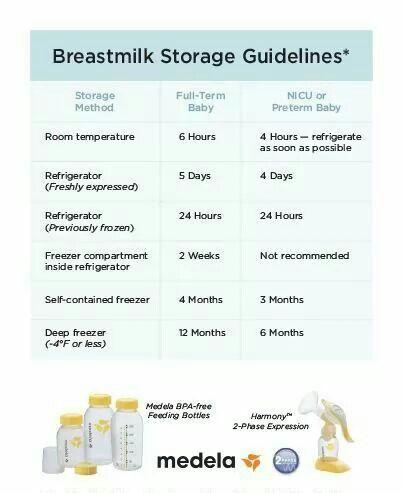
-
Egg . A product that is rich in many different micro and macro elements, vitamins. However, the egg has a very high allergenicity (included in the very big eight allergens). Considering that a quarter (5-6 g) or half (10-12 g) of the yolk, which are recommended to be administered, contains very few nutrients and energy, it is easier not to give this product than to risk allergic reactions in a child.
-
Whole nuts, peanuts should not be present in a child's diet until at least three years of age. In a number of countries, communities, families, where, for example, peanuts are common as a staple food, they can be used as an additive to complementary foods in a pureed state. Nuts are included in the big eight allergens and are not recommended for introduction into complementary foods for children with allergies up to three years of age.
-
Water . After the introduction of complementary foods, children can begin to offer water as a drink.
 First as an introduction, later as an additional source of fluid, while reducing the volume of breast milk (mixture). It should be pure water without any additives. It is important to remember that breastfed babies may go without water for quite a long time, due to the fact that they receive enough liquid from breast milk.
First as an introduction, later as an additional source of fluid, while reducing the volume of breast milk (mixture). It should be pure water without any additives. It is important to remember that breastfed babies may go without water for quite a long time, due to the fact that they receive enough liquid from breast milk. -
Tea . The World Health Organization does not recommend including tea in the diet of children under 2 years of age. Why? First of all, because of the tannins that are present in tea and can help reduce the absorption of trace elements, including iron and cause anemia. Tea also contains caffeine (it is found in a state associated with tannins and is more often called theine), which can cause excessive stimulating effect on the fragile nervous system of the child., It can also lead to increased heart rate, increased peristalsis of the stomach, increased body temperature - all this can adversely affect the general condition of the child.


